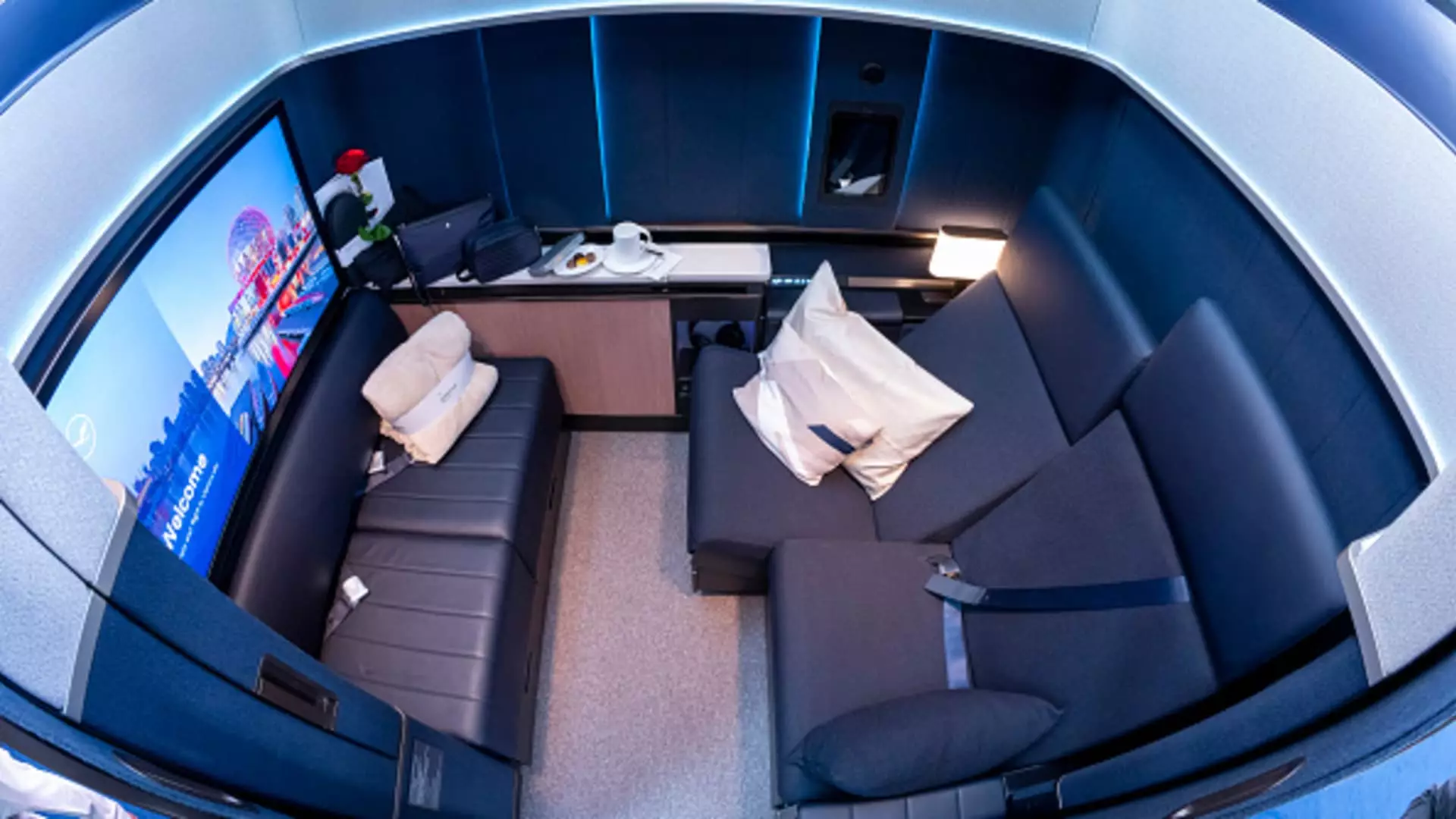The race to redefine air travel has taken a luxurious turn, with airlines striving to enhance passenger comfort and experience in first and business-class sections. However, the journey to elevate in-flight amenities has encountered significant obstacles that are delaying the delivery of new aircraft. With sophisticated seating options, high-definition entertainment systems, and premium privacy features all promised to discerning customers, the complexities of modern aircraft design, manufacturing delays, and regulatory scrutiny are causing significant turmoil for major aerospace firms like Boeing and Airbus.
Airlines have realized the undeniable appeal of enhancing their cabin products, especially in first and business class, where the profit margins are brightest. Features like heated and cooled seats, state-of-the-art entertainment systems, and even benches and convertible beds are in high demand. Yet, as Boeing CEO Kelly Ortberg highlighted during a recent industry conference, the intricate components necessary for these enhancements are partly holding up the delivery of new aircraft. The 787 Dreamliners, known for their long-range capabilities, remain at Boeing’s South Carolina facility, pending the installation of their advanced seating arrangements. Ortberg pointed out that while the seat design itself may appear simple, the regulatory maze for certifying the necessary cabinets and privacy doors is intricate and time-consuming.
Airbus, facing similar setbacks, illustrates the industry-wide struggle; CEO Guillaume Faury emphasized that the availability of seats and other essential components, such as galleys and storage compartments, has delayed completing aircraft. Together, these titans dominate the commercial airline market, and every aircraft delivery impacts their financial health. Deliveries hold particular significance because airlines pay bulk amounts upon receiving planes, which ties directly into manufacturers’ revenues and operational planning.
The Regulatory Maze and Its Impact
The aviation sector operates under meticulous regulations, which, while essential for safety, often slow down the induction of innovations. Each new design must undergo thorough scrutiny, not only for aesthetic reasons but also to ensure that emergency protocols can still be adhered to, thus prioritizing passenger safety above all else. A single business-class seat can consist of over a thousand parts, and as airlines prioritize reducing weight—an effort critical for fuel efficiency—the engineering challenges become exponentially complex. A seat might look sleek and modern, but it must also meet stringent regulations that assure passengers can safely exit in emergencies.
Moreover, the ongoing staffing shortages at agencies like the Federal Aviation Administration (FAA) exacerbate these delays. Even though some staff reductions have been deemed non-essential, the prospect of reduced manpower in oversight roles casts a long shadow over the speed at which new designs can be greenlit. As these challenges crystallize, many airlines find themselves restless, with no immediate resolutions in sight.
The financial implications of these delays cannot be understated. First and business-class seats, which can cost airlines hundreds of thousands of dollars to procure, represent a tempting revenue stream, especially in a post-pandemic world where consumers are not just eager but willing to pay for luxury travel experiences. For instance, Delta Air Lines has noted a remarkable increase in its non-economy ticket sales following the pandemic, with 57% of its sales originating from premium offerings—a sharp contrast to the 60% dependency on economy sales in 2010. Such statistics confirm a pivot in consumer behavior, encouraging airlines to invest heavily in luxurious upgrade options to cater to this evolving market.
Given that new planes offer greater range and, subsequently, new, nonstop routes, the urgency to innovate is clear. The competition to provide the most comfortable seats has escalated, with entities like Qantas, JetBlue, and Singapore Airlines striving to outdo each other in opulence. Singapore Airlines, for instance, is enhancing its longest flights with upgraded first-class accommodations, emphasizing a commitment to comfort and modernity.
Despite these challenges, the aviation industry remains resilient. Major players are now working closely alongside suppliers, regulators, and design engineers to navigate the intricacies of modern cabin standards and expedite solutions for certification delays. American Airlines, for example, has recently managed to secure approvals for its new seating, aiming to roll them out on two significant aircraft models within the year. As these advancements roll out, it’s evident that the cabin experience is on the brink of transformation, even if the road to that future is fraught with detours.
As airlines grapple with the complexities of modernizing their fleets with luxurious seating and in-flight technology, the urgency to bridge regulatory gaps, address supply chain constraints, and meet consumer expectations intensifies. Each delay is not just a story of inconvenience; it is a reflection of the evolving landscape of air travel, where premium experiences are not just welcomed but necessary for success in a competitive market. The industry will ultimately need to continue adapting and innovating, striving for excellence in passenger experience.


Leave a Reply